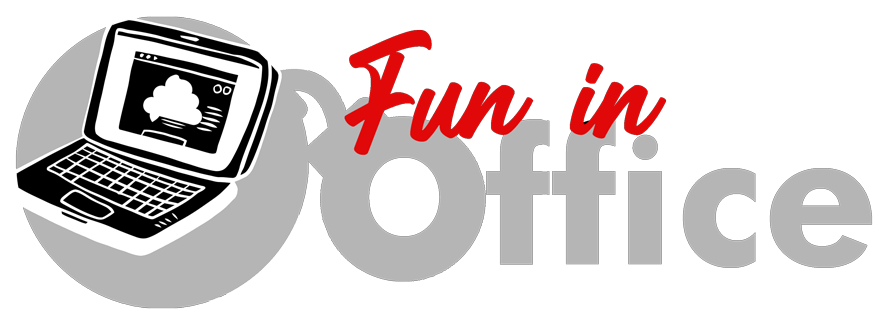In the wake of the global pandemic, remote work has transformed from a convenient option to a necessity for many businesses worldwide. The traditional office setup has given way to virtual workspaces, bringing forth both challenges and opportunities for organizations and their employees.
Table of Contents
Embracing Remote Work

The Shift to Remote Work
The onset of the COVID-19 pandemic forced companies to quickly adapt to remote work setups to ensure business continuity. What started as a temporary solution has now become a permanent fixture in many organizations’ operations.
Impact of Remote Work on Businesses and Employees
Remote work has reshaped the dynamics of the workplace, offering benefits such as increased flexibility, reduced overhead costs, and access to a broader talent pool. However, it also presents challenges related to communication, collaboration, and maintaining work-life balance.
Productivity in Remote Work Settings

Balancing Flexibility and Accountability
One of the key advantages of remote work is the flexibility it offers employees in managing their schedules and work environments. However, maintaining accountability is essential to ensure that tasks are completed efficiently and on time.
Tools and Strategies for Remote Productivity
Numerous tools and technologies are available to help remote teams stay organized, communicate effectively, and track their progress. From project management software to video conferencing platforms, these tools play a crucial role in enhancing productivity in remote work settings.
Maintaining Work-Life Balance

Blur between Work and Personal Life
One of the downsides of remote work is the blurring of boundaries between work and personal life. With no physical separation between the office and home, employees may find it challenging to disconnect and unwind after work hours.
Setting Boundaries and Prioritizing Self-Care
To combat the challenges of remote work, it’s essential for employees to establish clear boundaries between their professional and personal lives. This includes defining designated workspaces, setting specific work hours, and prioritizing self-care activities to prevent burnout.
The Future of Remote Work Post-Pandemic

Hybrid Work Models
As we look ahead, many organizations are considering hybrid work models that blend remote and in-office work. This approach offers the flexibility of remote work while still allowing for in-person collaboration and connection.
Addressing Challenges and Seizing Opportunities
While remote work presents challenges, it also opens up new opportunities for innovation, collaboration, and growth. By addressing the challenges head-on and embracing the possibilities of remote work, organizations can thrive in the post-pandemic era.
Overcoming Communication Hurdles

Importance of Clear Communication
Effective communication is critical in remote work settings to ensure that teams stay aligned, informed, and connected. Clear and transparent communication helps prevent misunderstandings and fosters a sense of trust and collaboration among team members.
Leveraging Technology for Effective Collaboration
Technology plays a vital role in facilitating communication and collaboration in remote work environments. From video conferencing tools to instant messaging platforms, leveraging the right technology enables seamless communication and collaboration regardless of physical distance.
Remote Work and Employee Wellbeing

Mental Health Considerations
Remote work can take a toll on employees’ mental health, leading to feelings of isolation, stress, and burnout. It’s essential for organizations to prioritize employee wellbeing by providing resources, support, and opportunities for connection.
Supporting Remote Employees’ Wellness
Organizations can support remote employees’ wellness by offering mental health resources, promoting work-life balance, and fostering a culture of support and empathy. By prioritizing employee wellbeing, organizations can cultivate a happier, healthier, and more productive workforce.
Remote Work Security Concerns

Data Privacy and Security Risks
With remote work comes increased cybersecurity risks, including data breaches, phishing attacks, and unauthorized access to sensitive information. Organizations must implement robust security measures to protect their data and mitigate the risks associated with remote work.
Implementing Robust Cybersecurity Measures
Securing remote work environments requires a multi-layered approach that includes implementing security protocols, providing cybersecurity training to employees, and investing in advanced security solutions. By prioritizing cybersecurity, organizations can safeguard their data and mitigate potential threats.
Building Remote Work Culture

Fostering Connection and Engagement
Building a strong remote work culture is essential for fostering connection, collaboration, and engagement among distributed teams. Virtual team-building activities, regular check-ins, and open communication channels help create a sense of belonging and community among remote employees.
Celebrating Successes and Building Morale
Recognizing and celebrating achievements, milestones, and successes is crucial for boosting morale and motivation in remote teams. Whether it’s through virtual celebrations, shout-outs in team meetings, or rewards and incentives, acknowledging employees’ contributions helps maintain morale and motivation.
Remote Work Challenges and Solutions

Addressing Connectivity Issues
One of the primary challenges of remote work is unreliable internet connectivity, which can disrupt communication and productivity. Organizations can address this issue by providing employees with reliable internet access, backup connectivity options, and technical support as needed.
Strategies for Overcoming Remote Work Challenges
In addition to connectivity issues, remote work poses various other challenges, including distractions, time management, and feelings of isolation. By implementing strategies such as time-blocking, creating a dedicated workspace, and fostering virtual connections, employees can overcome these challenges and thrive in remote work environments.
Conclusion, as remote work becomes the new normal for many organizations, it’s essential to adapt to the evolving landscape and embrace the opportunities it presents. By addressing challenges, fostering communication, and prioritizing employee wellbeing, organizations can navigate the remote work revolution successfully.
FAQs (Frequently Asked Questions)
-
How can organizations ensure remote employees stay productive?
Organizations can promote accountability, provide necessary tools and resources, and encourage open communication to support remote employees’ productivity.
-
What are some common cybersecurity risks associated with remote work?
Common cybersecurity risks include phishing attacks, data breaches, and unauthorized access to sensitive information due to the remote nature of work environments.
-
How can employees maintain work-life balance while working remotely?
Employees can establish clear boundaries between work and personal life, prioritize self-care activities, and communicate their needs and challenges with their employers.
-
What is the future of remote work post-pandemic?
The future of remote work may involve hybrid work models that blend remote and in-office work, offering employees flexibility while still enabling collaboration and connection.
-
How can organizations build a strong remote work culture?
Organizations can foster connection and engagement through virtual team-building activities, regular check-ins, and celebrating successes to build a sense of community among remote employees.
As the world navigates through unprecedented times, one significant change has emerged in the realm of work – the remote work revolution. What began as a necessity during the pandemic has transformed into a fundamental shift in how businesses operate and how employees perceive work.
cybersecurity employee wellbeing Productivity Remote Work remote work culture Work-Life Balance
Last modified: March 8, 2024





















